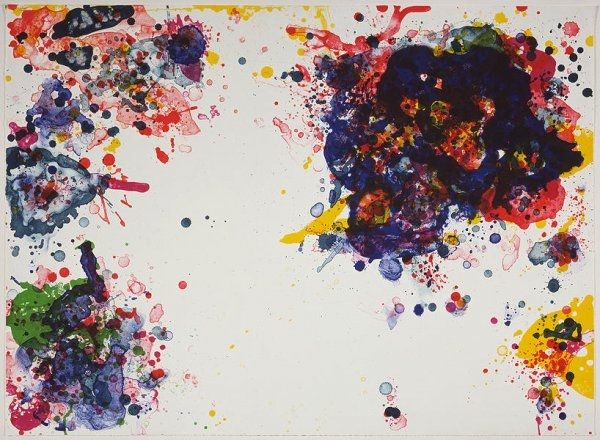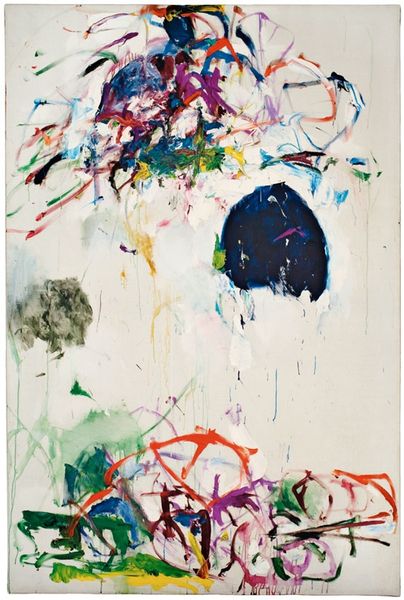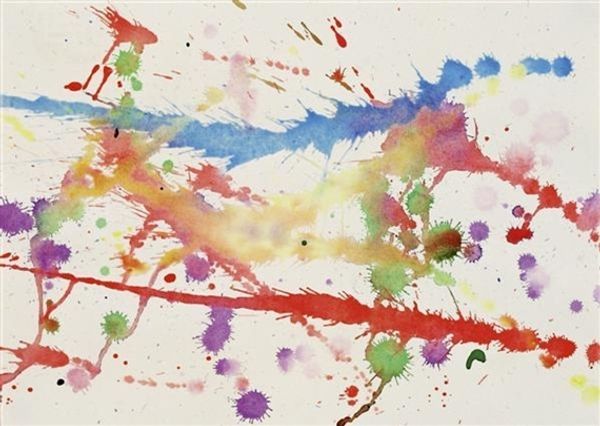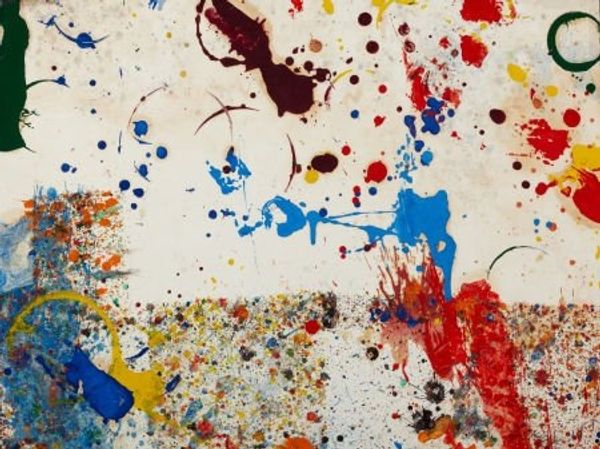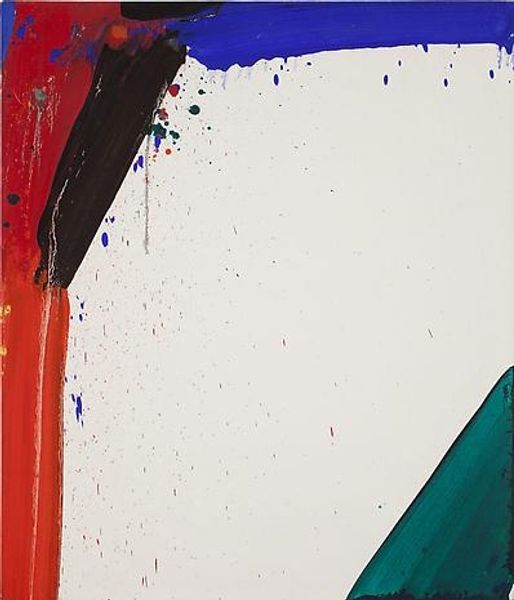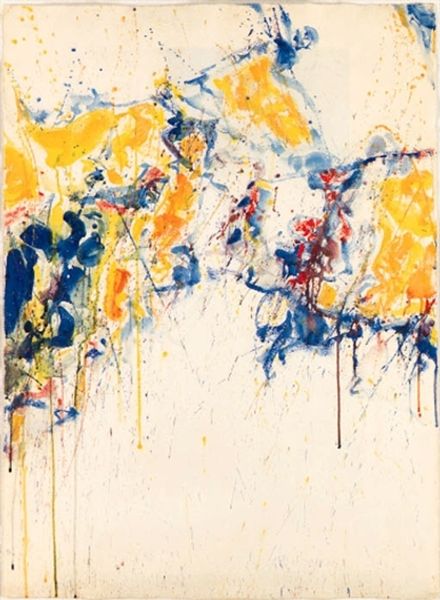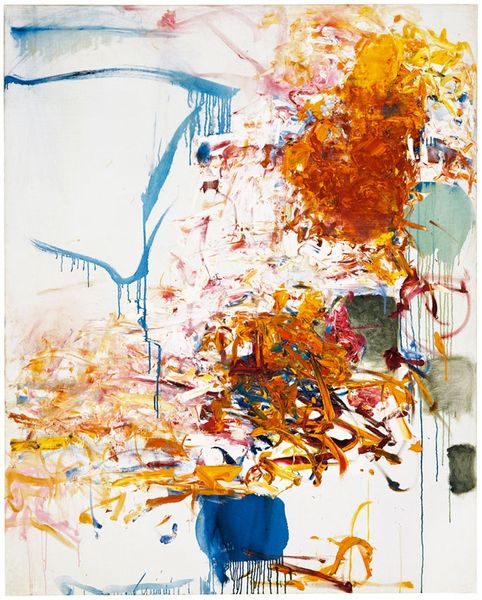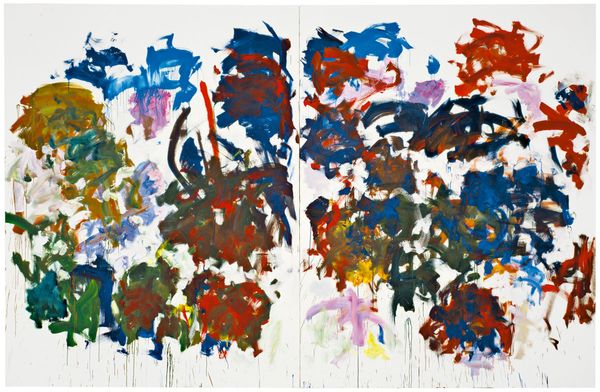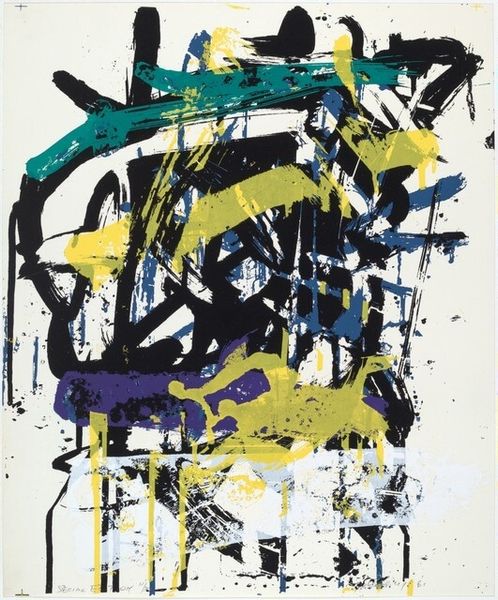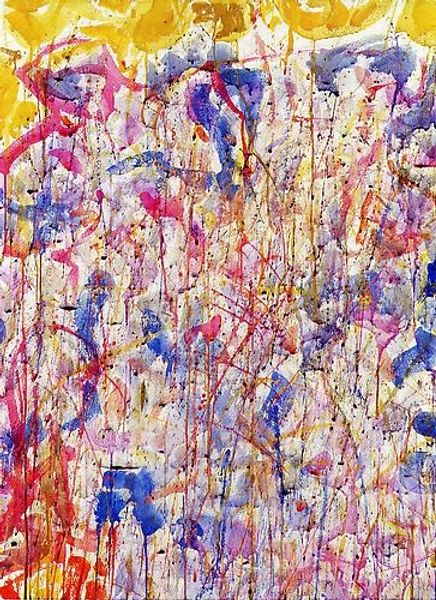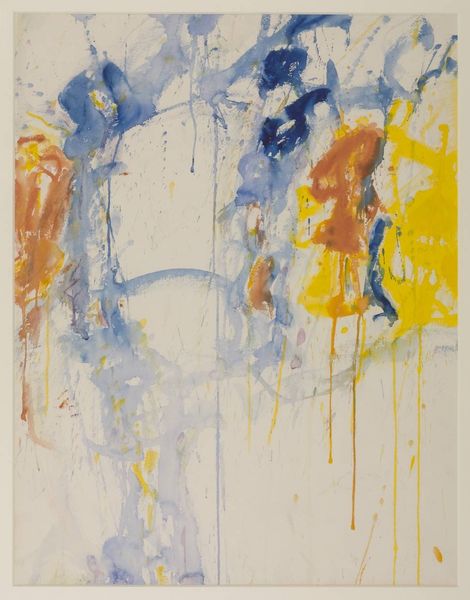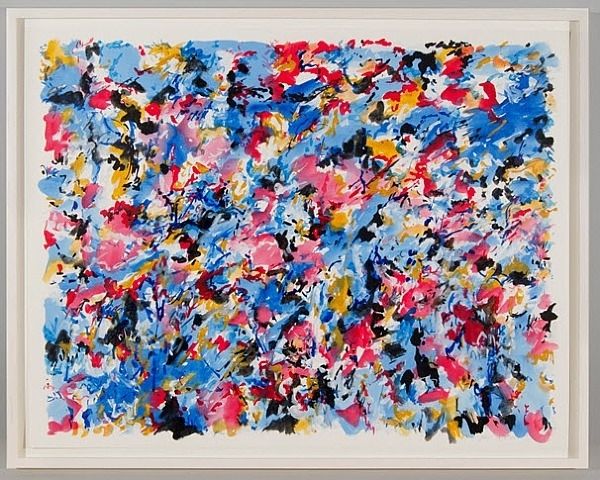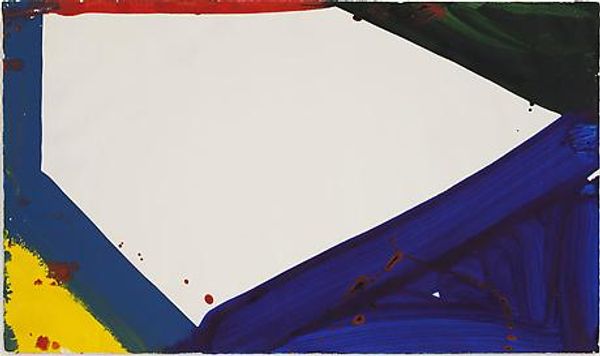
painting, acrylic-paint
#
abstract-expressionism
#
abstract expressionism
#
painting
#
acrylic-paint
#
acrylic on canvas
#
abstraction
#
allover-painting
#
modernism
Dimensions: 68.6 x 101.9 cm
Copyright: 2012 Sam Francis Foundation, California / Artists Rights Society (ARS), NY
Curator: Here we have Sam Francis’s “Untitled” from 1958, a vibrant example of Abstract Expressionism rendered in acrylic paint. The artwork currently resides here at MoMA. What are your initial thoughts? Editor: A cascade of color! The density at the top and the drips filtering downwards evoke a sense of liberation and… chaos. It feels unrestrained. Curator: The 'allover' composition dismisses a traditional focal point, emphasizing instead the materiality and process of paint application. Look at how the negative space—the areas of bare canvas—interacts with the chromatic intensity. It's a carefully orchestrated dance of color and emptiness. Editor: I wonder how the social climate of the late 1950s influenced Francis. Was this expressive freedom a subconscious rebellion against the conformity of the era? Were those vibrant splashes an outcry for greater freedom? Curator: One might say he was more concerned with pushing the boundaries of pictorial space, challenging the traditional figure-ground relationship, but your reading adds another dimension to its understanding. There's an undeniable energy within the strokes, a gestural quality indicative of the artist’s hand. The bright hues – pinks, oranges, blues – are almost Fauvist in their intensity. Editor: Indeed, the colour play feels almost euphoric, yet I find a trace of melancholy in those lone drips, as if the sheer force of expression cannot completely obscure a subtle undertone of existential angst, prevalent in the Cold War period. I wonder about its relationship to Abstract Expressionism and second-wave feminism. Curator: That's an insightful point. The lack of defined form invites projection, allowing viewers to engage with the artwork on a personal level, bringing their own histories and concerns to its interpretation. It exemplifies the kind of self-referentiality championed by Clement Greenberg in painting, emphasizing form above content, flatness over illusionism. Editor: Whether one sees pure formal experimentation or a more socially embedded commentary, the artwork is evocative and demands sustained viewing and dialogue. Curator: Indeed. It continues to spark questions about painting, perception, and the role of art in society.
Comments
No comments
Be the first to comment and join the conversation on the ultimate creative platform.
